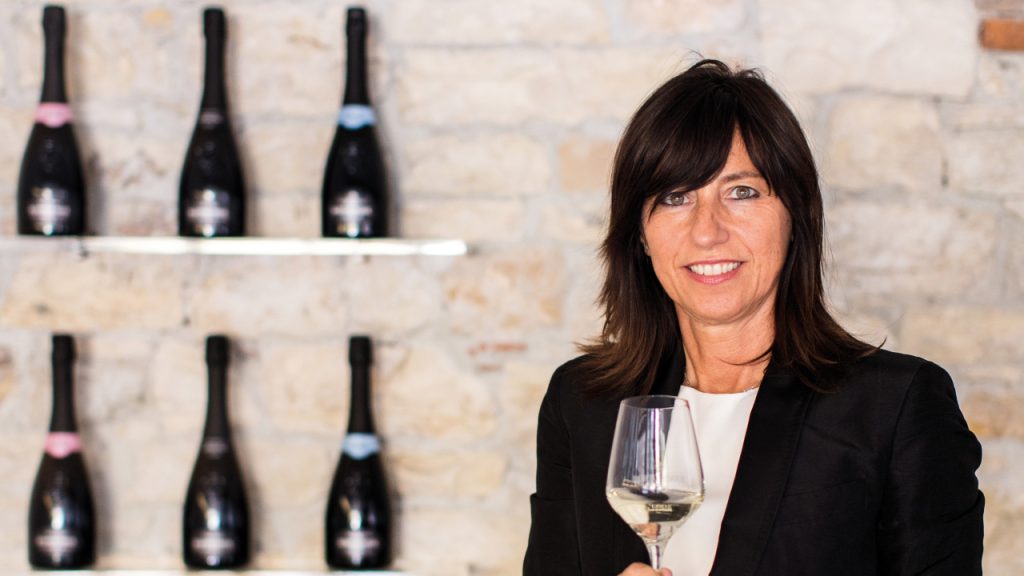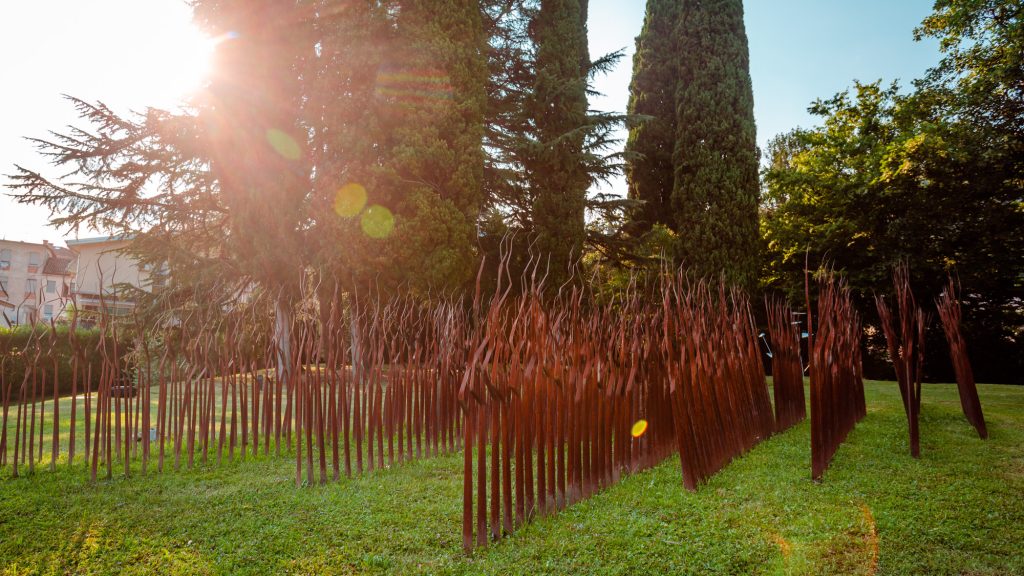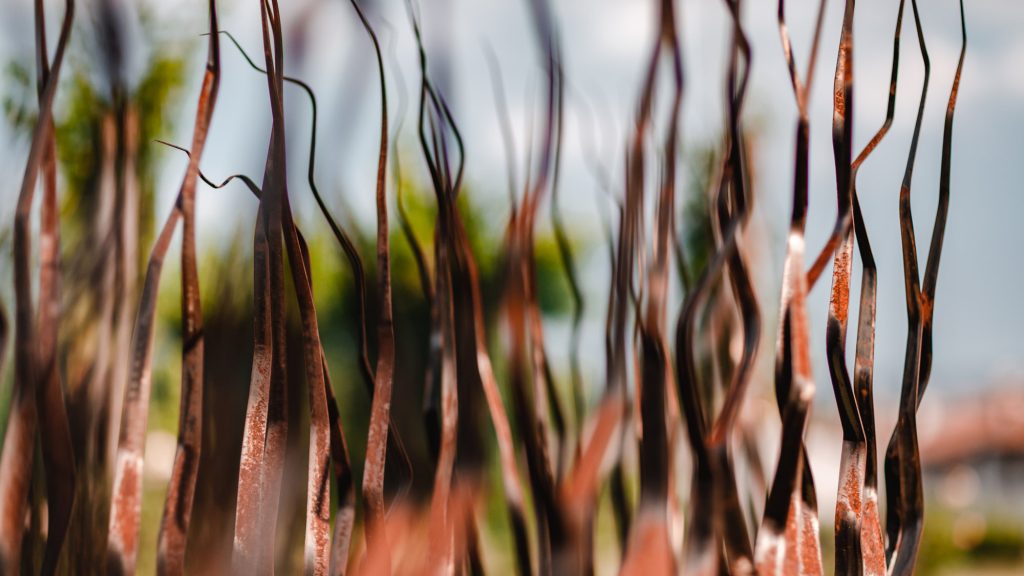
Face to face with Elvira Maria Bortolomiol to talk about Prosecco, an entrepreneur who continues with her cellar in the footsteps of her father Giuliano, the true founding patriarch of the most innovative version of this wine, the brut.
Prosecco is a world in itself: it grows and bubbles, with occasional curious results. In this sense, it truly is the offspring of its home country, the Venetia. Page after page has been written about the incredible development catalysed by winemaking in these territories, so much so that the challenge we face, today, is to treasure the living energy of this unstoppable phenomenon. There’s plenty of experiences that may guide you into the limitless world of the bubbly wine par excellence, each showing and proving the importance of what high-quality winemaking means today. One of the most meaningful is getting to know the story of the Prosecco Consortium, the chartered association that governs the standards of Prosecco-making. Long years of serious, environmentally sound work and of attention to rigid winemaking rules allowed this beautiful stretch of countryside, the Conegliano-Valdobbiadene territory, to be bestowed the highest honour there is, a place in the UNESCO World Heritage List. We talked about this long, virtuous journey with the president of the Consortium, Elvira Bortolomiol. Together with her mother and sisters, Bortolomiol has been working to project into the future her family’s business, initiated in the 1940s by her father, Giuliano.
100 years since Giuliano’s birth
The legacy my father left is of paramount importance, both in how we manage our business and in its effects on our mindset. He was a pioneer, the person who intuited what would bring about the highest returns for our beloved territory. Post-WWII, it was essential that farmers wouldn’t leave their homes, but instead, committed to them with even greater dedication and rebuild, in the words of intellectual and gastronome Luigi Veronelli, “their territory, by working the earth”.
My mother, my sisters, and I took this lesson to heart and we put it into everything we do, both on the job and in life. Much of what my father could only dream about came true, or will soon, and we owe it all to his teachings. In the early 2000s, we ended up being an all-female operation in the winemaking business, which is a male-dominated field. It wasn’t easy, we knew that much. We decided to focus on sustainability and on respect for nature and its laws in the way we chose to work with our associates. We carry this vision in everything we do. We work with some sixty farmers, with whom we devised a new way to do agriculture: taking care of our territory as a way to improve the quality of its fruits. Our family owns about 12 acres, all farmed organically. Two of them are part of the Filandetta park, our industrial archaeology project around a former spinning mill in Valdobbiadene where we art and culture meet in what we call an Art & Wine Farm. What is peculiar about our territory is that individual farmers own comparatively small farms, 2 to 4 acres. I inherited from my father a personal relationship with each of those farmers, who in turn share with us this project, this commitment to work rooted in a common vision of farming as a balance between tradition and innovation.
Sustainability reflects in the way we farm, in the way we manage our cellar, and in our EPD certification – Environmental Product Declaration – which we treasure and are very proud of. We earned it by keeping our carbon footprint as low as possible thanks to compensation with our 8-acre forest a short way north of our farm. We are working hard to certify all our production chain, and hope to reach that goal in 2023.
Parco della Filandetta
The Park is the living sign of how strongly we believe in tourism as a relevant industry, while of course never turning our back on winemaking. The Filandetta (‘local spinning mill’, ed.) is where we receive our associates and where wine is stocked before it is moved to a different cellar to grow into sparkling Prosecco. Historically, the compound housed the silk mill, obviously, as well as a paper warehouse. We made no changes to the overall volume – everything must be preserved as historically accurate as possible – but we did want to start our Art & Wine Farm to foster dialogue with the arts, possibly using the theme of wine. For our first project, we invited artist Giovanni Casellato, and for our second, Susken Rosenthal, whose piece Cocoon is part of a land art project over three hundred female artists participated in.
After a hiatus due to the pandemic, we went back on track and selected artist Inês Coelho da Silva, who installed a piece of hers in yet another place in the Park, an artwork inspired by silk thread. The Park is a vital compound in a strategic place that is growing into a reference point for domestic and international tourism as well as a beautiful calling card for the fifty countries we export our wine to. Thanks to these initiatives, people get to know and appreciate what we do. We developed a strong, genuine interest on this topic, because it allows us to promote our territory thanks to the universal language of art – whether the art is specifically about wine or absolute, universal, as it were.

Prosecco Brut
Giuliano, my father, loved to experiment. He went to winemaking school in Conegliano, which is one of the best in Italy. He experimented with the Charmat-Martinotti process, and he knew that with these grapes, which are now called Glera but were then known as Prosecco themselves, one could make excellent wine. The great Champagnes were indeed made with a brut method, unlike what traditionally had been the case in our region, where extra dry was the natural outcome, with a higher sugary residue. Making brut is harder, and results may be unpredictable. Giuliano knew he did the right thing when his Prosecco Brut Bortolomiol won the gold medal at the Concours international de dégustation in Montpellier, France. The award validated years of effort on part of whom, like him, always believed in the potential of Prosecco.
Roberto Cipresso, your oenologist
We were going through a bit of a rough patch, once, when we had to part ways with the oenologist we had been working with for years. We met Roberto and decided to trust him. He was going to revolutionize the way we managed our business: he and Emanuele Serafin, his right-hand man and also an oenologist, started from scratch – and us with them.
Thanks to Roberto, we were able to make another dream of my father’s come true: we made a great Tuscan wine, a red. We had been looking forward to that moment since we were kids. At the time, the only vacations we took with our father were in Tuscany. Roberto scoured Tuscany, looking for the perfect cultivar for the exact kind of wine we wanted to make, and he found it in San Giovanni d’Asso, in a vineyard of Montalcino variety. Il segreto di Giuliano (‘Giuliano’s Secret’) – this is the name of the wine, which we dedicated to our father, to his dreams, to his curiosity. A superior Sangiovese, finished for a year in French oak barrels.

The secret ingredient in Prosecco wine
Sociologists studied the topic – because wine is not merely a drink, it is in fact a social construct, too. I believe that, on top of tireless, committed work to ensure that quality stayed on the highest levels, our community came together to make the whole world appreciate our wine. Today, it is exported everywhere. There is a spirit of the place that we invoked, maybe subconsciously, that appears in everything we do. Community and sense of duty made it all possible.
Ph. Mattia Mionetto